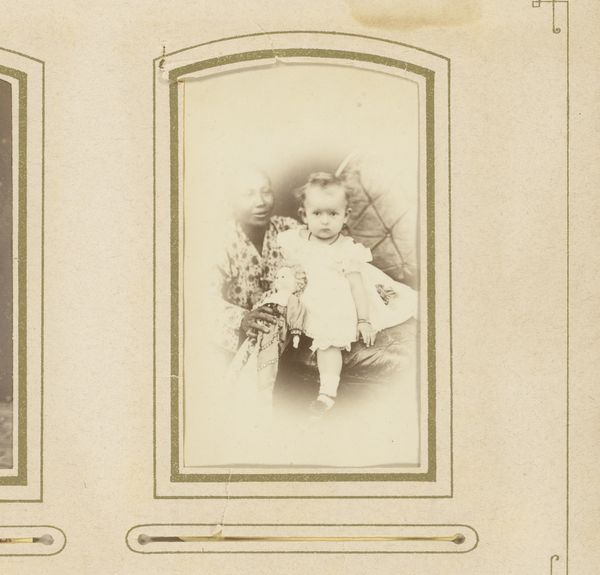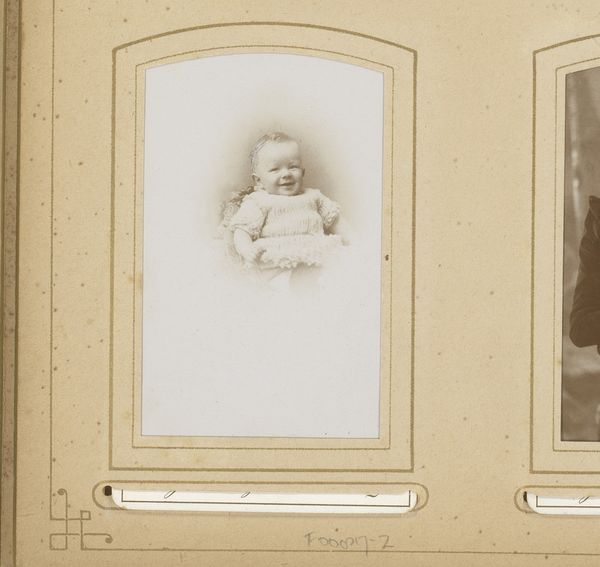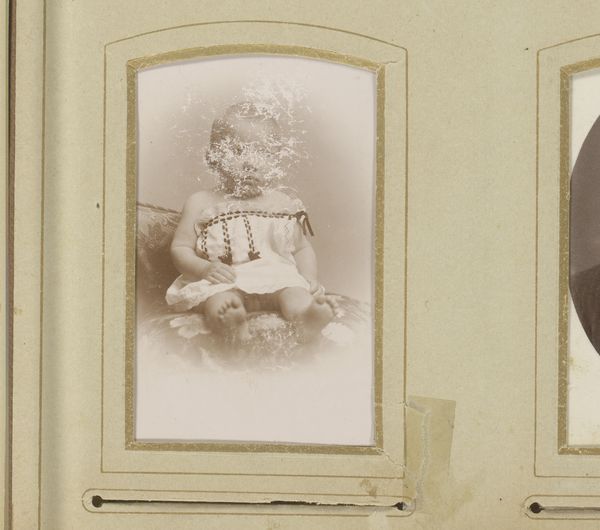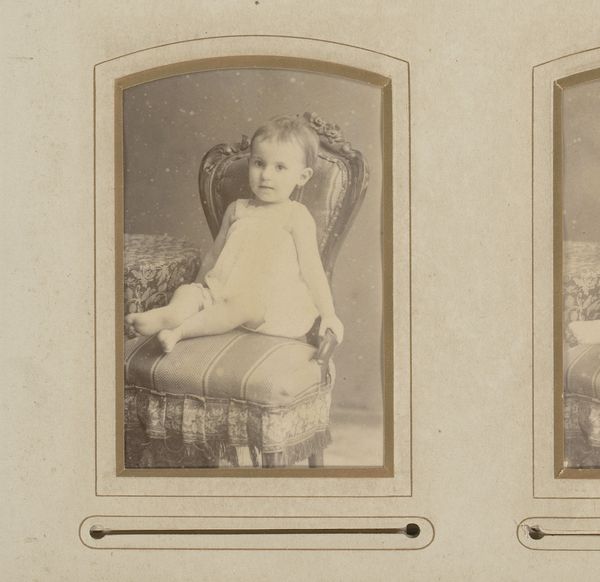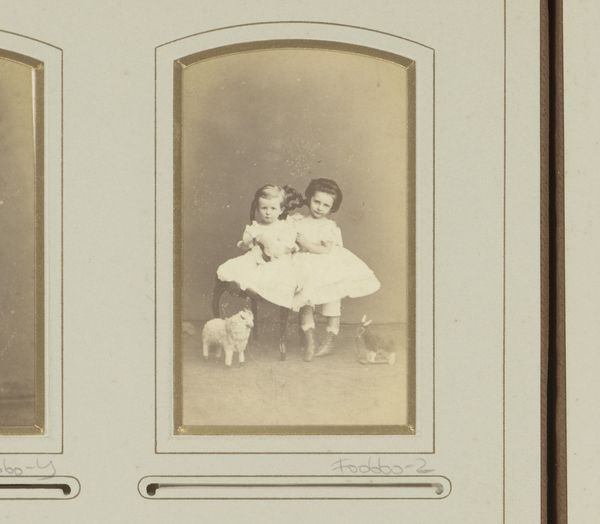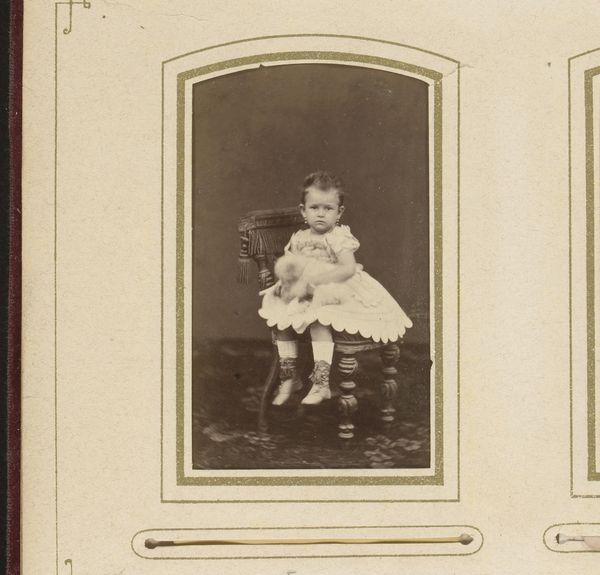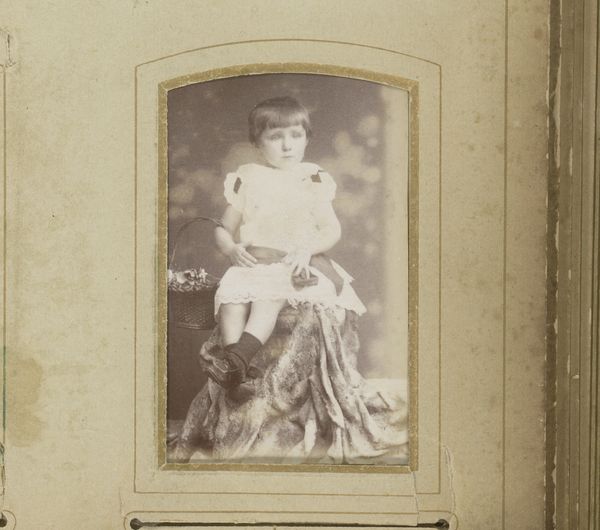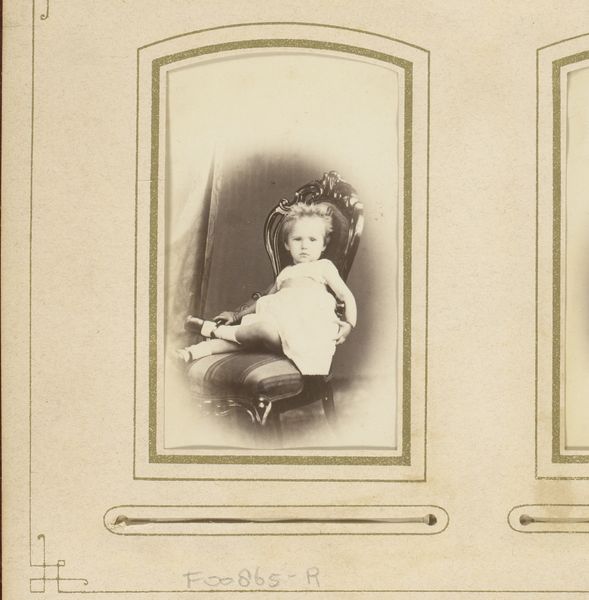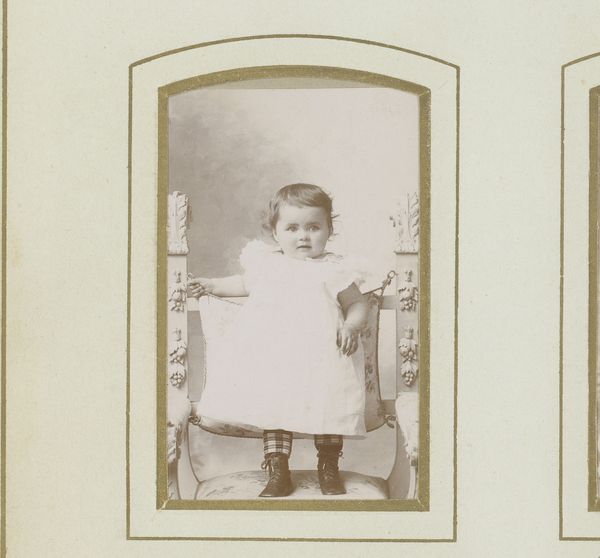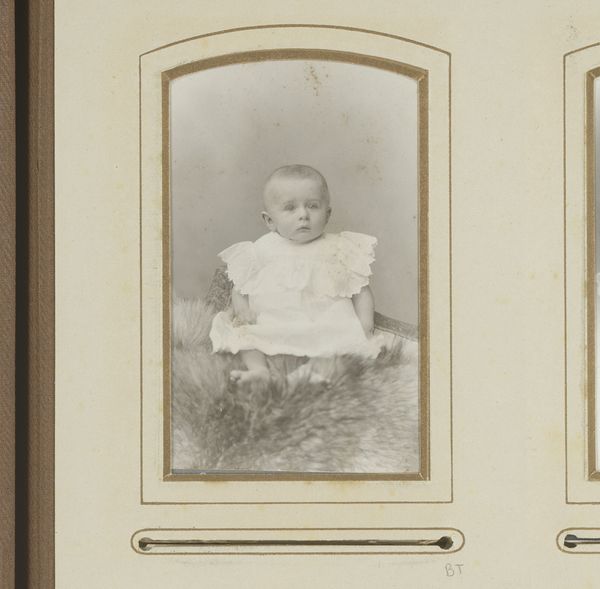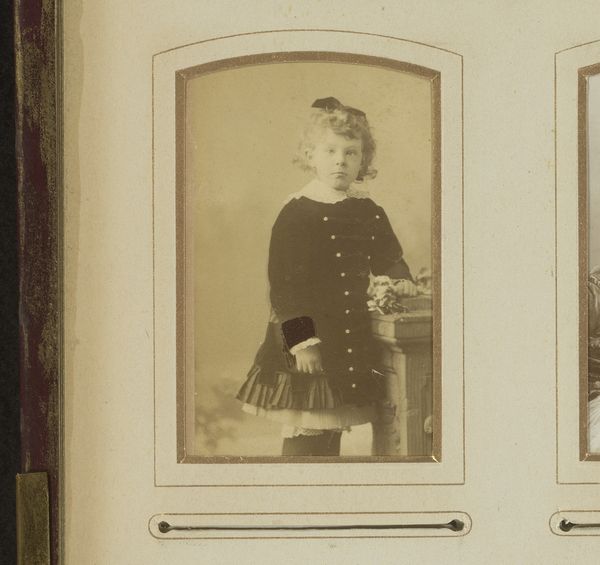
photography
#
portrait
#
photography
#
child
#
19th century
Dimensions: height 83 mm, width 50 mm
Copyright: Rijks Museum: Open Domain
Editor: Here we have F.H. Secourable's "Portret van een kind, zittend in een stoel", taken in 1878. It's a photographic portrait of a child in a chair, presented with a touching, gentle feel. What's your interpretation of this work? Curator: Well, beyond the simple image of a child, I see a carefully constructed representation deeply embedded in 19th-century social conventions. Think about the act of commissioning a portrait at that time – what did it signify for a family? Consider how the very posture of the child, seated and formally presented, reflects societal expectations surrounding innocence, class, and familial legacy. What do you notice about the child's attire? Editor: They are wearing a white dress. And there’s a dark band around the waist. Curator: Precisely. The child is wearing white which symbolizes purity. This links the image to contemporary beliefs about childhood. The dark band then offers a certain subtle sophistication – suggesting, perhaps, the family’s awareness of trends or status? Also, what do you make of the chair? Editor: It’s ornate, sort of woven. Curator: And therefore indicative of a specific economic background, or aspirations thereof. It becomes more than just a prop; it’s a signal of social standing and a marker within a broader visual language. Editor: It's interesting to see how much context can be packed into what appears to be a simple portrait. The symbolism makes it much more meaningful than just an image of a child. Curator: Exactly. It is vital to remember that this image participates in an ongoing, complex cultural narrative around identity, class, and representation, as told by the adults in the child's life, not the child. Considering that legacy opens our understanding of photographic history and its continuing implications.
Comments
No comments
Be the first to comment and join the conversation on the ultimate creative platform.
